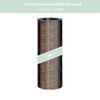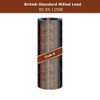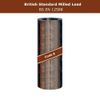Help & Advice > Product Guides > Lead Flashing
Lead flashing is a common material used in building projects for a variety of purposes, including repairs and waterproofing. However, there are multiple different types of lead with varying attributes and production processes. This guide will outline the similarities and differences between milled lead vs cast lead.
Table of contents:
Milled lead
Milled lead (also known as rolled lead) is manufactured under a highly automated process. This allows it to be produced to a consistent quality and size.
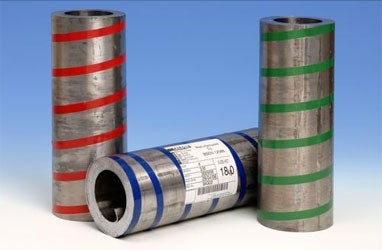
During the manufacturing process, a lead slab is constantly passed between two hydraulic rollers. This forms a sheet with precise consistency and thickness. This production method makes sure that each roll of lead is of a similar thickness along the entire length of the roll.
Buildings being constructed to a high standard may insist on the use of lead manufactured to BS EN 12588, the British Standard on lead and lead alloys. Milled lead is the only lead flashing produced to this standard, owing to the precision in the manufacturing process.
Cast lead
Cast lead (also known as machine cast lead) is manufactured by rotating a half-submerged water-cooled drum in a bath of molten lead. As the drum rotates, the hot molten lead sticks to the sides of the cold drum and solidifies. This is then peeled off the drum and onto a cutting bed.
This type of lead is different to milled lead in that the thickness is controlled by changing the depths that the roller is to be immersed, and the speed at which the drum rotates. This difference in production means that cast lead can never match the exact tolerance as that of milled lead. One benefit, however, is that this is more cost-effective due to the simpler production process.
Milled lead vs cast lead
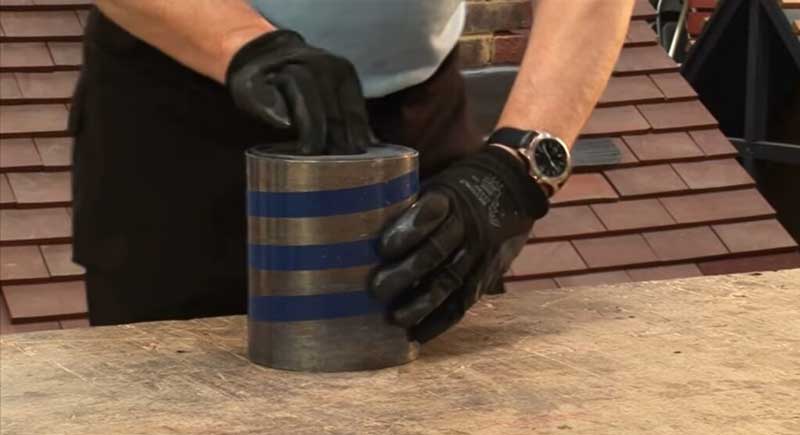
Aside from the differences in manufacturing, there is little between the two products in usability. There is a preference towards milled lead with some specialist contractors who say that it is easier to work, less likely to have a brown tint and less likely to split.
Other tagged products
![Product image of IKO Armourglass Plus Square Butt Roofing Shingles Slate - 2m2 Pack]()
![Product image of IKO Armourglass Plus Black Square Butt Roofing Shingles - 2m2 Pack]()
![Product image of IKO Roofing Felt Shingle Underlay 3B - 20m x 1m]()
- SHOW MORESHOW LESS
Other tagged products
![Product image of Lead Code 4 - 600mm x 4m Roofing Lead]()
![Product image of Lead Code 4 - 400mm x 4m Roofing Lead]()
- SHOW MORESHOW LESS
Other tagged products
![Product image of Lead Code 5 - 600mm x 2m Roofing Lead]()
![Product image of Lead Code 6 - 1.6m x 3m Roofing Lead Flashing Roll]()
![Product image of Lead Code 4 - 1.2m x 1.2m Roofing Lead]()
![Product image of Calder Lead Code 6 Roofing Lead Flashing Roll - 600mm]()
- SHOW MORESHOW LESS
Other tagged products
![Product image of Lead Code 5 225mm x 6m Roofing Lead]()
![Product image of Lead Sash Weights Single 17.5lb]()
![Product image of Lead Code 6 - 760mm x 2.25m Roofing Lead]()
![Product image of Lead Code 5 - 1.22m x 3.5m Roofing Lead]()
![Product image of Calder Lead Code 3 Roofing Lead Flashing Roll - 1200mm]()
- SHOW MORESHOW LESS
Other tagged products
![Product image of Lead Code 5 225mm x 6m Roofing Lead]()
![Product image of Lead Code 6 - 760mm x 2.25m Roofing Lead]()
![Product image of Lead Code 5 - 1.22m x 3.5m Roofing Lead]()
- SHOW MORESHOW LESS
Other tagged products
![Product image of Lead Code 4 - 400mm x 3.4m Roofing Lead]()
![Product image of Lead Code 6 - 1.2m x 2m Roofing Lead]()
![Product image of Lead Code 3 - 300mm x 300mm Roofing Lead]()
![Product image of Lead Code 4 - 300mm x 2.5m Roofing Lead]()
![Product image of Lead Code 6 - 914mm x 2.6m Roofing Lead]()
![Product image of Lead Code 5 - 450mm x 1.2m Roofing Lead]()
![Product image of Lead Code 7 - 600mm x 5m Roofing Lead]()
- SHOW MORESHOW LESS
Other tagged products
![Product image of Lead Code 6 - 1.2m x 2m Roofing Lead]()
![Product image of Lead Code 3 - 300mm x 300mm Roofing Lead]()
![Product image of Lead Code 4 - 300mm x 2.5m Roofing Lead]()
![Product image of Lead Code 5 - 450mm x 1.2m Roofing Lead]()
![Product image of Lead Code 7 - 600mm x 5m Roofing Lead]()
- SHOW MORESHOW LESS
Other tagged products
![Product image of Lead Code 4 - 400mm x 3.4m Roofing Lead]()
![Product image of Lead Code 6 - 1.2m x 2m Roofing Lead]()
![Product image of Lead Code 3 - 300mm x 300mm Roofing Lead]()
![Product image of Lead Code 4 - 300mm x 2.5m Roofing Lead]()
![Product image of Lead Code 5 - 450mm x 1.2m Roofing Lead]()
![Product image of Lead Code 7 - 600mm x 5m Roofing Lead]()
- SHOW MORESHOW LESS
Other tagged products
![Product image of Lead Code 4 - 915mm x 6m Roofing Lead Flashing Roll]()
![Product image of Calder Lead Code 4 Roofing lead Flashing Roll - 1.5m x 3m]()
![Product image of Lead Code 8 - 1.2m x 6m Roofing Lead Flashing Roll]()
![Product image of Lead Code 8 - 700mm x 6m Roofing Lead Flashing Roll]()
![Product image of Calder Lead Code 4 Roofing Lead Flashing Roll - 180mm x 3m]()
![Product image of Lead Code 4 - 480mm x 3m Roofing Lead Flashing Roll]()
![Product image of Lead Code 5 - 420mm x 3m Roofing Lead Flashing Roll]()
![Product image of Lead Code 7 - 300mm x 6m Roofing Lead Flashing Roll]()
![Product image of Calder Lead Code 7 Roofing Lead Flashing Roll - 480mm x 6m]()
![Product image of Lead Code 3 - 1.2m x 3m Roofing Lead Flashing Roll]()
![Product image of Lead Code 4 - 400mm x 3.4m Roofing Lead]()
![Product image of Lead Code 3 - 330mm x 3m Roofing Lead Flashing Roll]()
![Product image of Lead Code 6 - 1.2m x 2m Roofing Lead]()
![Product image of Lead Code 5 - 1m x 3.5m Roofing Lead]()
![Product image of Lead Code 3 - 300mm x 300mm Roofing Lead]()
![Product image of Lead Code 4 - 300mm x 2.5m Roofing Lead]()
![Product image of Lead Code 6 - 914mm x 2.6m Roofing Lead]()
![Product image of Lead Code 5 - 450mm x 1.2m Roofing Lead]()
![Product image of Lead Code 7 - 600mm x 5m Roofing Lead]()
![Product image of Lead Code 7 - Cut Lengths]()
![Product image of Calder Lead Code 3 Roofing Lead Flashing Roll - 570mm]()
![Product image of Calder Lead Code 3 Roofing Lead Flashing Roll - 1000mm]()
![Product image of Calder Lead Code 5 Roofing Lead Flashing Roll - 1100mm]()
![Product image of Calder Lead Code 4 Roofing Lead Flashing Roll - 800mm]()
- SHOW MORESHOW LESS
Other tagged products
![Product image of Calder Lead Code 4 Roofing Lead Flashing Roll - 100mm x 6m]()
![Product image of Lead Code 5 - 100mm x 6m Roofing Lead Flashing Roll]()
![Product image of Calder Lead Code 3 Roofing Lead Flashing Roll - 100mm]()
- SHOW MORESHOW LESS
Other tagged products
![Product image of Restec Flexitec 2020 Primer Dark Grey - 5kg]()
![Product image of Restec Flexitec 2020 Resin Dark Grey - 20kg]()
![Product image of Calder Lead Code 4 Roofing Lead Flashing Roll - 800mm]()
- SHOW MORESHOW LESS
Other tagged products
![Product image of Lead Code 6 - 1.2m x 2m Roofing Lead]()
![Product image of Lead Code 3 - 300mm x 300mm Roofing Lead]()
![Product image of Lead Code 4 - 300mm x 2.5m Roofing Lead]()
![Product image of Lead Code 5 - 450mm x 1.2m Roofing Lead]()
![Product image of Lead Code 7 - 600mm x 5m Roofing Lead]()
![Product image of Calder Lead Code 4 Roofing Lead Flashing Roll - 800mm]()
- SHOW MORESHOW LESS
Other tagged products
![Product image of Code 3 300 x 3m Lead]()
![Product image of Lead Code 6 - 510mm x 3m Roofing Lead Flashing Roll]()
- SHOW MORESHOW LESS
Other tagged products
![Product image of Lead Code 4 - 915mm x 6m Roofing Lead Flashing Roll]()
![Product image of Calder Lead Code 4 Roofing lead Flashing Roll - 1.5m x 3m]()
![Product image of Lead Code 8 - 1.2m x 6m Roofing Lead Flashing Roll]()
![Product image of Lead Code 8 - 700mm x 6m Roofing Lead Flashing Roll]()
![Product image of Calder Lead Code 4 Roofing Lead Flashing Roll - 180mm x 3m]()
![Product image of Lead Code 4 - 480mm x 3m Roofing Lead Flashing Roll]()
![Product image of Lead Code 5 - 420mm x 3m Roofing Lead Flashing Roll]()
![Product image of Lead Code 5 - 1m x 2.065m]()
![Product image of Lead Code 5 - 330mmx 6m Roofing Lead Flashing Roll]()
![Product image of Lead Code 5 - 600mm x 6m Roofing Lead Flashing Roll]()
![Product image of Lead Code 7 - 300mm x 6m Roofing Lead Flashing Roll]()
![Product image of Calder Lead Code 7 Roofing Lead Flashing Roll - 480mm x 6m]()
![Product image of Lead Code 3 - 1.2m x 3m Roofing Lead Flashing Roll]()
![Product image of Lead Code 4 - 400mm x 3.4m Roofing Lead]()
![Product image of Lead Code 3 - 330mm x 3m Roofing Lead Flashing Roll]()
![Product image of Lead Code 3 - 360mm x 3m Roofing Lead Flashing Roll]()
![Product image of Lead Code 5 - 500mm x 2.4m Roofing Lead]()
![Product image of Lead Code 5 - 580mm x 1.5m Roofing Lead]()
![Product image of Lead Code 6 - 520mm x 2.65m Roofing Lead]()
![Product image of Lead Code 6 - 1.2m x 2m Roofing Lead]()
![Product image of Lead Code 5 - 1.2m x 1.5m Roofing Lead]()
![Product image of Lead Code 5 - 1m x 3.5m Roofing Lead]()
![Product image of Lead Code 6 - 2.11m x 770mm Roofing Lead]()
![Product image of Lead Code 6 - 600mm x 4m Roofing Lead]()
![Product image of Lead Code 5 - 675mm x 2m Roofing Lead]()
![Product image of Lead Code 3 - 300mm x 300mm Roofing Lead]()
![Product image of Lead Code 5 - 1.6m x 1.9m Roofing Lead]()
![Product image of Lead Code 4 - 1.6m x 2m Roofing Lead]()
![Product image of Lead Code 3 - 300mm x 7m Roofing Lead]()
![Product image of Lead Code 4 - 300mm x 2.5m Roofing Lead]()
![Product image of Lead Code 6 - 914mm x 2.6m Roofing Lead]()
![Product image of Lead Code 4 - 950mm x 1.05m Roofing Lead]()
![Product image of Lead Code 5 - 450mm x 1.2m Roofing Lead]()
![Product image of Lead Code 7 - 600mm x 5m Roofing Lead]()
![Product image of Lead Code 7 - Cut Lengths]()
![Product image of Calder Lead Code 3 Roofing Lead Flashing Roll - 570mm]()
![Product image of Calder Lead Code 3 Roofing Lead Flashing Roll - 1000mm]()
![Product image of Calder Lead Code 5 Roofing Lead Flashing Roll - 1100mm]()
![Product image of Calder Lead Code 4 Roofing Lead Flashing Roll - 800mm]()
- SHOW MORESHOW LESS
Other tagged products
![Product image of Calder Lead Code 4 Roofing lead Flashing Roll - 1.5m x 3m]()
![Product image of Lead Code 8 - 1.2m x 6m Roofing Lead Flashing Roll]()
![Product image of Lead Code 8 - 700mm x 6m Roofing Lead Flashing Roll]()
![Product image of Calder Lead Code 4 Roofing Lead Flashing Roll - 180mm x 3m]()
![Product image of Lead Code 4 - 480mm x 3m Roofing Lead Flashing Roll]()
![Product image of Lead Code 5 - 420mm x 3m Roofing Lead Flashing Roll]()
![Product image of Lead Code 5 - 1m x 2.065m]()
![Product image of Lead Code 5 - 330mmx 6m Roofing Lead Flashing Roll]()
![Product image of Lead Code 5 - 600mm x 6m Roofing Lead Flashing Roll]()
![Product image of Lead Code 7 - 300mm x 6m Roofing Lead Flashing Roll]()
![Product image of Calder Lead Code 7 Roofing Lead Flashing Roll - 480mm x 6m]()
![Product image of Lead Code 3 - 1.2m x 3m Roofing Lead Flashing Roll]()
![Product image of Lead Code 4 - 400mm x 3.4m Roofing Lead]()
![Product image of Lead Code 3 - 330mm x 3m Roofing Lead Flashing Roll]()
![Product image of Lead Code 3 - 360mm x 3m Roofing Lead Flashing Roll]()
![Product image of Lead Code 5 - 500mm x 2.4m Roofing Lead]()
![Product image of Lead Code 5 - 580mm x 1.5m Roofing Lead]()
![Product image of Lead Code 6 - 520mm x 2.65m Roofing Lead]()
![Product image of Lead Code 6 - 1.2m x 2m Roofing Lead]()
![Product image of Lead Code 5 - 1.2m x 1.5m Roofing Lead]()
![Product image of Lead Code 5 - 1m x 3.5m Roofing Lead]()
![Product image of Lead Code 6 - 2.11m x 770mm Roofing Lead]()
![Product image of Lead Code 6 - 600mm x 4m Roofing Lead]()
![Product image of Lead Code 5 - 675mm x 2m Roofing Lead]()
![Product image of Lead Code 3 - 300mm x 300mm Roofing Lead]()
![Product image of Lead Code 5 - 1.6m x 1.9m Roofing Lead]()
![Product image of Lead Code 4 - 1.6m x 2m Roofing Lead]()
![Product image of Lead Code 3 - 300mm x 7m Roofing Lead]()
![Product image of Lead Code 4 - 300mm x 2.5m Roofing Lead]()
![Product image of Lead Code 6 - 914mm x 2.6m Roofing Lead]()
![Product image of Lead Code 4 - 950mm x 1.05m Roofing Lead]()
![Product image of Lead Code 5 - 450mm x 1.2m Roofing Lead]()
![Product image of Lead Code 7 - 600mm x 5m Roofing Lead]()
![Product image of Lead Code 7 - Cut Lengths]()
![Product image of Calder Lead Code 3 Roofing Lead Flashing Roll - 570mm]()
![Product image of Calder Lead Code 3 Roofing Lead Flashing Roll - 1000mm]()
![Product image of Calder Lead Code 5 Roofing Lead Flashing Roll - 1100mm]()
![Product image of Calder Lead Code 4 Roofing Lead Flashing Roll - 800mm]()
- SHOW MORESHOW LESS
Other tagged products
![Product image of Lead Code 4 - 915mm x 6m Roofing Lead Flashing Roll]()
![Product image of Calder Lead Code 4 Roofing lead Flashing Roll - 1.5m x 3m]()
![Product image of Lead Code 8 - 1.2m x 6m Roofing Lead Flashing Roll]()
![Product image of Lead Code 8 - 700mm x 6m Roofing Lead Flashing Roll]()
![Product image of Calder Lead Code 4 Roofing Lead Flashing Roll - 180mm x 3m]()
![Product image of Lead Code 4 - 480mm x 3m Roofing Lead Flashing Roll]()
![Product image of Lead Code 5 - 420mm x 3m Roofing Lead Flashing Roll]()
![Product image of Lead Code 5 - 1m x 2.065m]()
![Product image of Lead Code 5 - 330mmx 6m Roofing Lead Flashing Roll]()
![Product image of Lead Code 5 - 600mm x 6m Roofing Lead Flashing Roll]()
![Product image of Lead Code 7 - 300mm x 6m Roofing Lead Flashing Roll]()
![Product image of Calder Lead Code 7 Roofing Lead Flashing Roll - 480mm x 6m]()
![Product image of Lead Code 3 - 1.2m x 3m Roofing Lead Flashing Roll]()
![Product image of Lead Code 4 - 400mm x 3.4m Roofing Lead]()
![Product image of Lead Code 3 - 330mm x 3m Roofing Lead Flashing Roll]()
![Product image of Lead Code 3 - 360mm x 3m Roofing Lead Flashing Roll]()
![Product image of Lead Code 5 - 500mm x 2.4m Roofing Lead]()
![Product image of Lead Code 5 - 580mm x 1.5m Roofing Lead]()
![Product image of Lead Code 6 - 520mm x 2.65m Roofing Lead]()
![Product image of Lead Code 6 - 1.2m x 2m Roofing Lead]()
![Product image of Lead Code 5 - 1.2m x 1.5m Roofing Lead]()
![Product image of Lead Code 5 - 1m x 3.5m Roofing Lead]()
![Product image of Lead Code 6 - 2.11m x 770mm Roofing Lead]()
![Product image of Lead Code 6 - 600mm x 4m Roofing Lead]()
![Product image of Lead Code 5 - 675mm x 2m Roofing Lead]()
![Product image of Lead Code 3 - 300mm x 300mm Roofing Lead]()
![Product image of Lead Code 5 - 1.6m x 1.9m Roofing Lead]()
![Product image of Lead Code 4 - 1.6m x 2m Roofing Lead]()
![Product image of Lead Code 3 - 300mm x 7m Roofing Lead]()
![Product image of Lead Code 4 - 300mm x 2.5m Roofing Lead]()
![Product image of Lead Code 6 - 914mm x 2.6m Roofing Lead]()
![Product image of Lead Code 5 - 450mm x 1.2m Roofing Lead]()
![Product image of Lead Code 7 - 600mm x 5m Roofing Lead]()
![Product image of Lead Code 7 - Cut Lengths]()
![Product image of Calder Lead Code 3 Roofing Lead Flashing Roll - 570mm]()
![Product image of Calder Lead Code 3 Roofing Lead Flashing Roll - 1000mm]()
![Product image of Calder Lead Code 5 Roofing Lead Flashing Roll - 1100mm]()
![Product image of Calder Lead Code 4 Roofing Lead Flashing Roll - 800mm]()
- SHOW MORESHOW LESS
Other tagged products
![Product image of Lead Code 4 - 300mm x 6m Roofing Lead Flashing Roll]()
![Product image of Lead Code 4 - 300mm x 2.5m Roofing Lead]()
![Product image of VELUX EDL MK06 0000 Single Slate Flashing - 78cm x 118cm]()
![Product image of VELUX GGL MK06 207021U White Centre Pivot Electric Window INTEGRA - 78 x 118cm]()
- SHOW MORESHOW LESS
Other tagged products
![Product image of Lead Code 4 - 915mm x 6m Roofing Lead Flashing Roll]()
![Product image of Calder Lead Code 4 Roofing lead Flashing Roll - 1.5m x 3m]()
![Product image of Lead Code 8 - 1.2m x 6m Roofing Lead Flashing Roll]()
![Product image of Lead Code 8 - 700mm x 6m Roofing Lead Flashing Roll]()
![Product image of Calder Lead Code 4 Roofing Lead Flashing Roll - 180mm x 3m]()
![Product image of Lead Code 4 - 480mm x 3m Roofing Lead Flashing Roll]()
![Product image of Lead Code 5 - 420mm x 3m Roofing Lead Flashing Roll]()
![Product image of Lead Code 5 - 330mmx 6m Roofing Lead Flashing Roll]()
![Product image of Lead Code 5 - 600mm x 6m Roofing Lead Flashing Roll]()
![Product image of Lead Code 7 - 300mm x 6m Roofing Lead Flashing Roll]()
![Product image of Calder Lead Code 7 Roofing Lead Flashing Roll - 480mm x 6m]()
![Product image of Calder Lead Code 8 Roofing Lead Flashing Roll - 510mm x 6m]()
![Product image of Lead Code 3 - 1.07m x 3m Roofing Lead Flashing Roll]()
![Product image of Lead Code 3 - 1.2m x 3m Roofing Lead Flashing Roll]()
![Product image of Lead Code 3 - 330mm x 3m Roofing Lead Flashing Roll]()
![Product image of Lead Code 3 - 360mm x 3m Roofing Lead Flashing Roll]()
![Product image of Calder Lead Code 3 Roofing Lead Flashing Roll - 570mm]()
![Product image of Calder Lead Code 3 Roofing Lead Flashing Roll - 1000mm]()
![Product image of Calder Lead Code 5 Roofing Lead Flashing Roll - 1100mm]()
![Product image of Calder Lead Code 4 Roofing Lead Flashing Roll - 800mm]()
- SHOW MORESHOW LESS
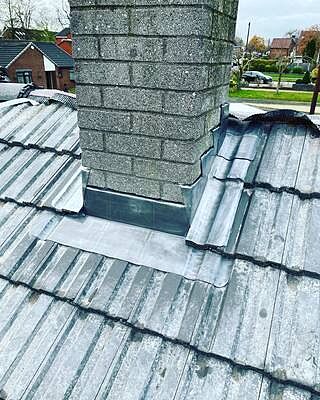





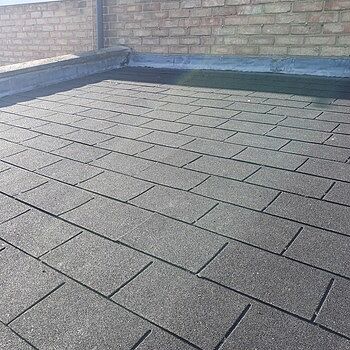
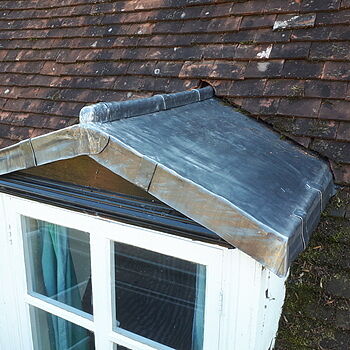
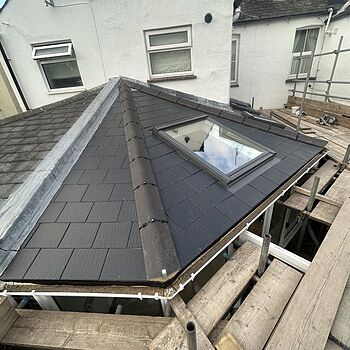

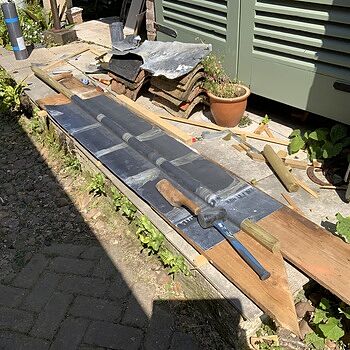




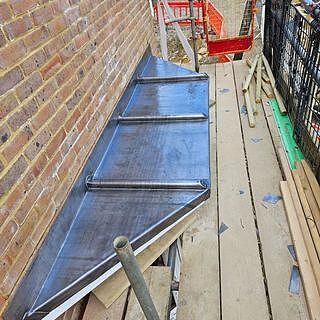

























Was this guide useful?
Mentioned in this product guide:
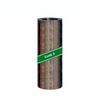
Calder Lead Code 3 Roofing Lead Flashing Roll - 150mm
from
£18.69 ex VAT
from
£22.43 Incl. VAT
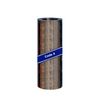
Calder Lead Code 4 Roofing Lead Flashing Roll - 300mm
from
£48.06 ex VAT
from
£57.67 Incl. VAT
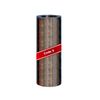
Calder Lead Code 5 Roofing Lead Flashing Roll - 450mm
from
£90.78 ex VAT
from
£108.94 Incl. VAT
